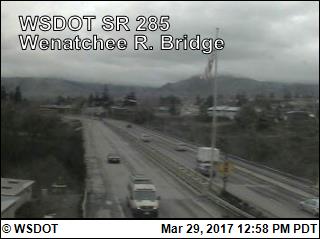This was an interesting project for a ficticious company based in Napa County. We created three sales territories using a variety of methods with the goal of equal distribution of sales prospects in terms of potential sales and number of prospects.
We then created a route map for the top ten highest sales potential prospects for each sales territory starting from the salesperson's home. The default map was then compared to a optimum route map created using Network Analyst.
Napa's Best Wines Final Presentation
Tuesday, November 23, 2010
Monday, November 1, 2010
Better Books new store site selection - Report
Following is the link to my final power point presentation. This was an interesting project for an area in which I lived. I lived and worked on the Presidio of San Francisco and am very familiar with potential new store locations and existing store locations. Better Books and the sales data was ficticious; however, the demographics came from 2003 Census Data.
I would have liked to delve more into the marketing analysis of this project, e.g. which demographics most affect sales, how to interpret sales figures but just didn't have any more time.
Better Books Site Selection Presentation
I would have liked to delve more into the marketing analysis of this project, e.g. which demographics most affect sales, how to interpret sales figures but just didn't have any more time.
Better Books Site Selection Presentation
Sunday, October 24, 2010
Sunday, October 17, 2010
Monday, October 11, 2010
Marin City Center - Part 3
This was a very interesting project that would have been amazing with some field work or some more data. We first analyzed the land cover within the Marin City by trees, grass and impervious features using orthophotographs. Carbon storage and sequestration was also analyzed based on some specific census block neighborhoods.
The final portion of the project provided a conceptual plan of the city center. We attempted to justify the expenditure for the new city center in conjuction with a tree planting project. The goal was to create a plan that would offset the annual utilities of the city center complex by at least 50% with the energy savings of trees. There was not nearly enough space within the less than 8 acre city center complex to plant enough trees to offset the utuility costs, so the remainder of trees would need to be planted around the city or on an additional piece of property purchased by the city.
Marin City Center Final Report
The final portion of the project provided a conceptual plan of the city center. We attempted to justify the expenditure for the new city center in conjuction with a tree planting project. The goal was to create a plan that would offset the annual utilities of the city center complex by at least 50% with the energy savings of trees. There was not nearly enough space within the less than 8 acre city center complex to plant enough trees to offset the utuility costs, so the remainder of trees would need to be planted around the city or on an additional piece of property purchased by the city.
Marin City Center Final Report
Sunday, October 3, 2010
Marin City Tree Study
The intent of the project was to convince the City of Marin to support the planting and maintenance of trees in areas that would benefit economically and environmentally to qualify for a federal grant under the Small Business Environment Stewardship Assistance Act of 2010. The city would have to commit to a 25% match of the grant.
In this project I analyzed the land cover for selected neighborhoods within Marin City. An 1 meter othorographic image was manually classified into 50 different classes of trees, grasses, and impermeable surfaces (buildings, pavement, etc). The land use layer was then reclassified into 3 classes (trees, grass, impermeable).
I determined the acreage of each class and the percent of trees for each of 5 neighborhoods. Using the CITYgreen average mulipliers, I calculated the carbon storage and carbon sequestration rate.
Monday, September 20, 2010
Asthma Hositalization - San Francisco Bay Area
This was a three week project to identify a target population susceptible to asthma attacks requiring hospitalization in the San Francisco Bay Area. Analysis was done using Census data for demographics and data on Ozone and Particulate Matter. Alameda County was identified as having the highest Asthma hospitalization rates among the 9 counties in the Bay Area especially among the large African American population in the County. This map shows the 4 area hospitals located near the most dense black population areas.
Here is a link for a power point showing the steps I took in the analysis process and the many maps I created along the way.
Subscribe to:
Posts (Atom)











